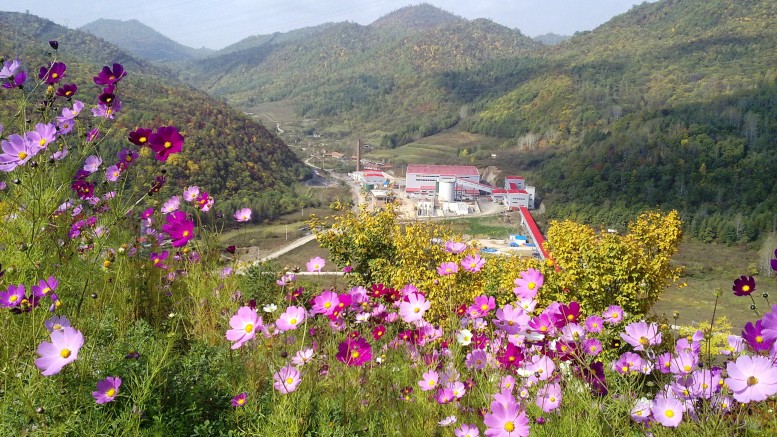VANCOUVER — It took two years, but mid-tier gold miner Eldorado Gold (TSX: ELD; NYSE: EGO) is finally divesting all of its development and production assets in China with the announced sale of its White Mountain and Tanjianshan gold mines, and the development-stage Eastern Dragon gold project, to an affiliate of China’s Yintai Resources (SHSZ: 000975) for US$600 million in cash.
Eldorado had been evaluating what to do with its Chinese gold portfolio since 2014, and was contemplating a listing on the Hong Kong Stock Exchange. But the strategy shifted towards monetization in the past few months, with Eldorado president and CEO Paul Wright indicating on a May 12 conference call that there were “numerous approaches by companies looking to acquire [the assets].”

Operations at White Mountain gold mine. Credit: Eldorado Gold.

Tanjianshan is an open pit gold mine located in Qinghai Province in northwest China. Credit: Eldorado Gold.
The transaction should close by December, though it is subject to various approvals, including Yintai shareholder approval. The agreement comprises a US$30-million deposit to be paid by Yintai, and a reverse break-fee of the same amount payable by Eldorado.
Eldorado reported 140,989 oz. gold produced at an average cash-operating cost of $603 per oz. during the first quarter, and registered a US$700,000 net loss. The company’s Chinese production portfolio accounted for 58,000 oz. gold.
The sale price for Eldorado final three Chinese assets was well-above many estimates, with Scotiabank analyst Tanya Jakusconek valuing White Mountain, Tanjianshan and Eastern Dragon at a combined US$390 million, assuming a US$1,275 per oz. gold price and 5% discount rate. Scotiabank says the deal is “positive,” because it provides Eldorado with “significant additional financial flexibility, as it considers its near- to medium-term capital allocation plans.”

Jinfeng is an open pit and underground gold mine located in China’s southern Guizhou Province. Credit: Eldorado Gold.
What will Eldorado do with its ample and growing treasury? The company already ended March with US$236 million in cash and equivalents, and limited short-term debt obligations.
Eldorado is scoring another US$300 million by selling its Jinfeng mine to a wholly owned subsidiary of China National Group. Adding its pro-forma cash and money from the Chinese assets, Eldorado would soon sit on US$1.1 billion.
The company’s near-term development portfolio is headlined by a pair of polymetallic projects in Greece — Olympias and Skouries — where it will invest US$32 million this year. Eldorado has had its problems with Greek regulators, but it received approvals in early May to restart underground construction at Skouries.
For more on this story: Eldorado Gold to sell Jinfeng mine to China National Gold


Be the first to comment on "Eldorado exits China with US$900-million in asset sales"